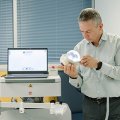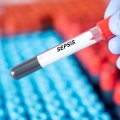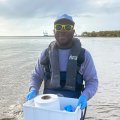Three University of Queensland scientists have led an international team to victory, predicting the occurrence of epileptic seizures with unprecedented accuracy.
The UQ Centre for Advanced Imaging scientists have shared victory in the Seizure Prediction Challenge sponsored by the American Epilepsy Society, the US National Institute of Neurological Disorders and Stroke, and the Epilepsy Foundation.
The win was announced at the Presidential Symposium of the American Epilepsy Society this week.
Dr Quang Tieng, Dr Simone Bosshard and Dr Min Chen from the Centre for Advanced Imaging collaborated with engineer Drew Abbot and mathematician Phillip Adkins, both California-based, to develop a computer algorithm that predicts the occurrence of epileptic seizures from the brain’s activity recorded up to an hour beforehand.
“The team’s computer algorithm out-performed those from over 500 teams from around the globe by predicting seizures with an accuracy of 82 per cent,” team leader Quang Tieng said.
Professor David Reutens, Director Centre for Advanced Imaging and a neurologist specialising in epilepsy treatment, said one-in-26 people lived with epilepsy world-wide.
“Epileptic seizures occur unpredictably and can have significant consequences including injury and death,” Professor Reutens said.
“This work will ultimately help patients with epilepsy towards greater independence through implantable devices to prevent seizures or through early warning systems”
UQ Deputy Vice-Chancellor (Research) Professor Robyn Ward congratulated the team.
“I’m delighted to see a quality international collaboration leading to an outcome that has such potential to eventually changes lives for the better,” she said.
Media: Centre for Advanced Imaging, Rebecca Osborne, +61 7 3365 4235, rebecca.osborne@cai.uq.edu.au.
About the Centre for Advanced Imaging: The Centre was created in 2009 as a strategic initiative of The University of Queensland. It reflects the growing role of imaging in cutting-edge biotechnology and biomedical research at UQ. Bringing together the skills of a critical mass of researchers and state-of-the-art research imaging instruments, it is the only facility of its type in Australia, and one of only a handful of such centres in the world.












